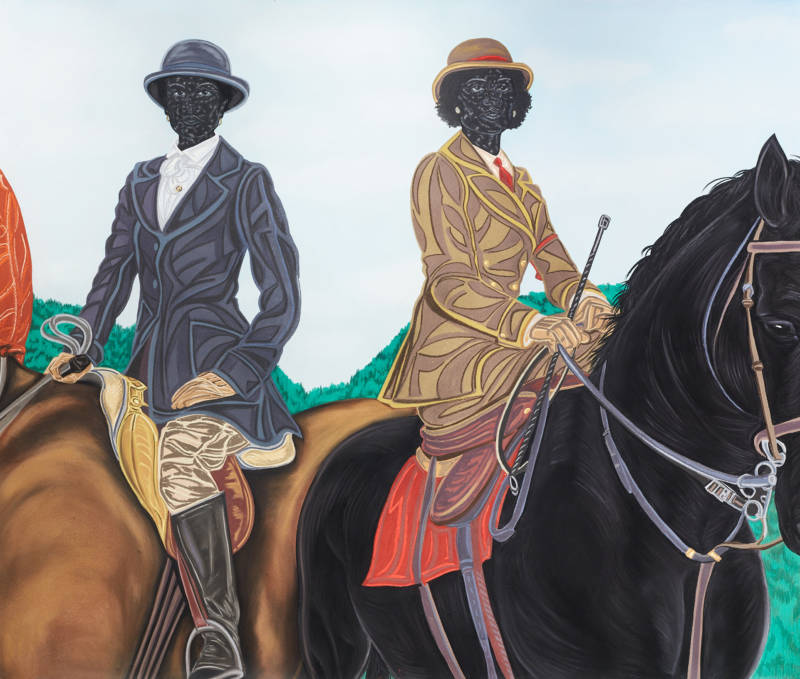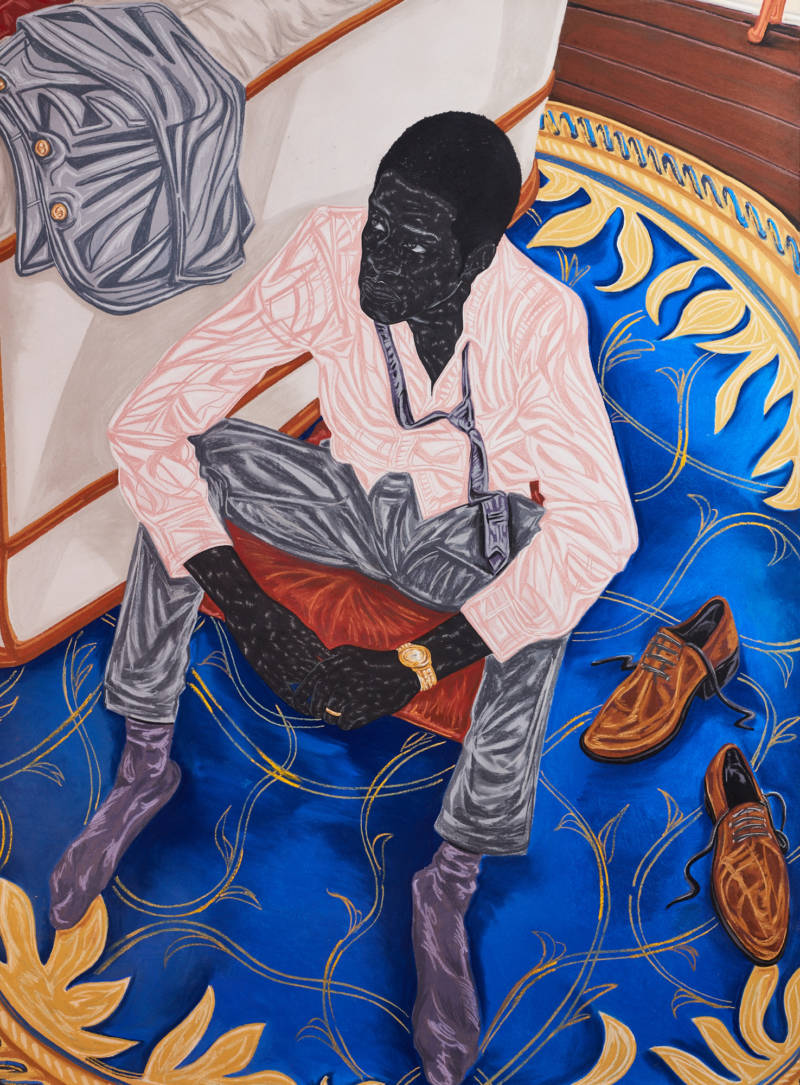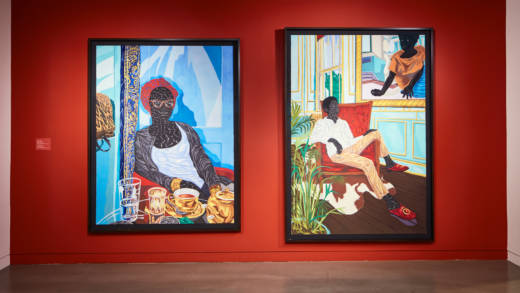At San Francisco’s Museum of the African Diaspora, the exhibition A Matter of Fact presents itself as a survey of the aristocratic Nigerian UmuEze Amara family’s centuries-old art collection. The 18 large-scale drawings on display depict lives of leisure, fashion and abundance. But the exhibition title is playful. No such family exists and all the works are by a single artist: New York-based Toyin Ojih Odutola. A Matter of Fact is an exhibition of invention.
Odutola may be best known for her mostly black-and-white pen and ink drawings of nude figures set against blank backgrounds. The subjects in these portraits are rendered with a muscular texture, as if their skin was painlessly removed. The work in A Matter of Fact both draws on and departs from this stripped-down aesthetic. In the new charcoal, pastel and pencil drawings on view at MoAD, Odutola places her subjects, draped in fine, fashionable clothes, in colorful and ornate settings. There is something democratic about the early drawings in the way individuals are reduced to a shared anatomy, but in A Matter of Fact, the trappings of wealth make difference palpable.
Odutola pulls viewers into her drawings through careful attention to detail, encouraging us to scan for symbols of privilege. The fact that the artist consciously crafted these signifiers only makes them more visible; no one element of a drawing can be taken for granted. A Matter of Fact becomes a meditation on wealth, luxury and their sometimes arbitrary markers.

In Afternoon Tea, a woman reclines in a cushioned chair, staring out toward the viewer with a look somewhere between aloofness and contentment. She betrays no emotions. A royal blue curtain with gold embroidery brushes against her right arm. A leopard-print bag sits partly in the frame. The subject’s demeanor, her surroundings, the gold bracelets encircling both wrists — each of these suggests a certain level of privilege — but it is the woman’s leisurely approach to drinking tea that speaks loudest to her elevated social status.
Odutola’s subjects frequently recline. In A Grand Inheritance, a young man lounges idly on a carved armchair with deep red upholstery. His spreads his legs, draping one over the chair’s arm. The chair sits atop an animal skin rug in a room decorated with ferns and an Odutola-esque painting of a woman relaxing on a floor. Where less well-off contemporaries might sit stiffly, the upscale setting affords this aristocratic youth the luxury of striking a casual pose.

With some of the drawings, it is the smallest of details that demonstrates the subjects’ social class. Winter Dispatch is an intimate image of two hands writing a letter with a golden fountain pen. The letter is written on stationery engraved or embossed with an insignia, possibly belonging to the UmuEze Amara family. The edge of the emblem is seen repeated on loose sheets of paper below the letter; it also appears on the front of a letter sorter on the writer’s desk. It is not just the act of writing that denotes wealth, it is the manner in which the writing is conducted and with which tools.



